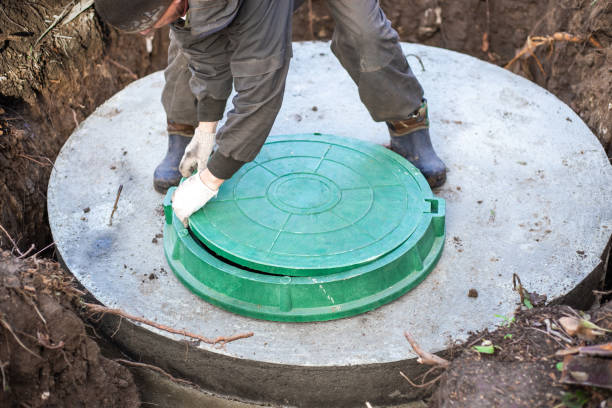Septic tanks are an essential part of many homes that quietly perform the vital task of treating wastewater. However, these septic tanks beneath your property can pose significant safety risks if not handled carefully.
In this article, we will delve into crucial tips for promoting safety around septic tanks. By the end, you’ll understand why it’s imperative to prioritize septic tank safety to protect your property and for the well-being of your family and the environment.
Let’s get into it.
Know Your Septic System Inside Out
Before you can implement safety measures effectively, it’s crucial to have a comprehensive understanding of how your septic system operates.
First off, it’s important to note that septic systems operate via several components, including the tank, drainfield, and pipes. To reap the benefits of the septic system without experiencing any hazards, you must understand the basic mechanics of said system.
Following this, you should know the tank’s location, capacity, and when it was last pumped. A clear grasp of these fundamentals will empower you to make informed decisions about maintenance and safety measures. It will also help you ensure your septic system functions efficiently and safely for years.
Regular Maintenance
One of the most critical aspects of septic tank safety is regular maintenance. Neglecting your septic system can lead to costly repairs, environmental damage, and health hazards. Regular inspections and maintenance can prevent these issues.
You should start by scheduling routine inspections with qualified septic professionals. These pros will assess the tank’s condition, check for leaks or blockages, and recommend a pumping schedule based on your household’s size and usage.
This proactive approach not only enhances septic system longevity but also reduces the risk of potential health, environmental, and safety hazards.
Implement Child-Proofing Measures
The safety of children around septic tanks is of paramount importance. Children, being the young explorers, are naturally curious, and the allure of an access point to the mysterious underground world can be irresistible. To protect them from potential accidents, you must implement child-proofing measures.
These measures begin with installing sturdy, locked lids on your septic tank access points. These lids should be capable of withstanding significant weight and preventing accidental openings.
Additionally, you should consider fencing off the area around the septic tank to create a physical barrier. This keeps children at a safe distance and serves as a visual reminder of the potential dangers.
Finally, you can’t go wrong with teaching your children about the importance of avoiding the septic tank area. As you do this, you should regularly remind them of the potential risks and explain the reasons behind the safety measures in place.
By combining physical barriers with education, you create a robust defense against accidents and promote a safe environment for your little ones.
Proper Waste Disposal
Responsible waste disposal is vital to septic tank safety. Improperly disposed of items can lead to clogs, backups, and even system failure. It’s essential to adopt proper waste disposal techniques to protect your septic system and the environment.
The first technique for proper waste disposal is to never flush non-biodegradable items down the toilet. This includes items like paper towels, sanitary products, and non-flushable wipes. These can accumulate in the septic tank and hinder its ability to function properly.
Additionally, avoid pouring chemicals, oils, or grease down the drain. In addition to being able to lead to clogging, doing this can also disrupt the natural bacterial balance within the tank – which is bad.
By adopting responsible waste disposal practices, you’re contributing to the long-term health and safety of your septic system, your property, and the surrounding environment.
Address Common Safety Hazards and Warning Signs
Understanding potential safety hazards and recognizing warning signs of septic system issues is crucial for maintaining a safe environment.
Some common safety hazards include unstable ground around the tank and deteriorating or damaged tank components. These hazards can lead to collapses or accidents if not addressed promptly. To prevent these, it’s important to detect them before they happen. In other words, you must watch for their warning signs.
Warning signs of septic system issues may include foul odors, slow-draining fixtures, or pooling water around the tank area. If you notice any of these signs, you must contact a qualified septic professional to assess the situation and recommend necessary repairs or maintenance.
Conclusion
Promoting safety around septic tanks isn’t just a one-time task. It’s an ongoing commitment to the well-being of your property, family, and environment.
You’re creating a culture of safety by understanding your septic system, conducting regular maintenance, implementing child-proofing measures, practicing responsible waste disposal, and staying vigilant for safety hazards. In addition to ensuring that your septic system operates efficiently, this culture will help you contribute to a cleaner and healthier environment.
Reach out to Vi Reel Septic and Excavations for premium services in septic installation, maintenance, repair, and inspection to ensure your system operates safely and efficiently.


